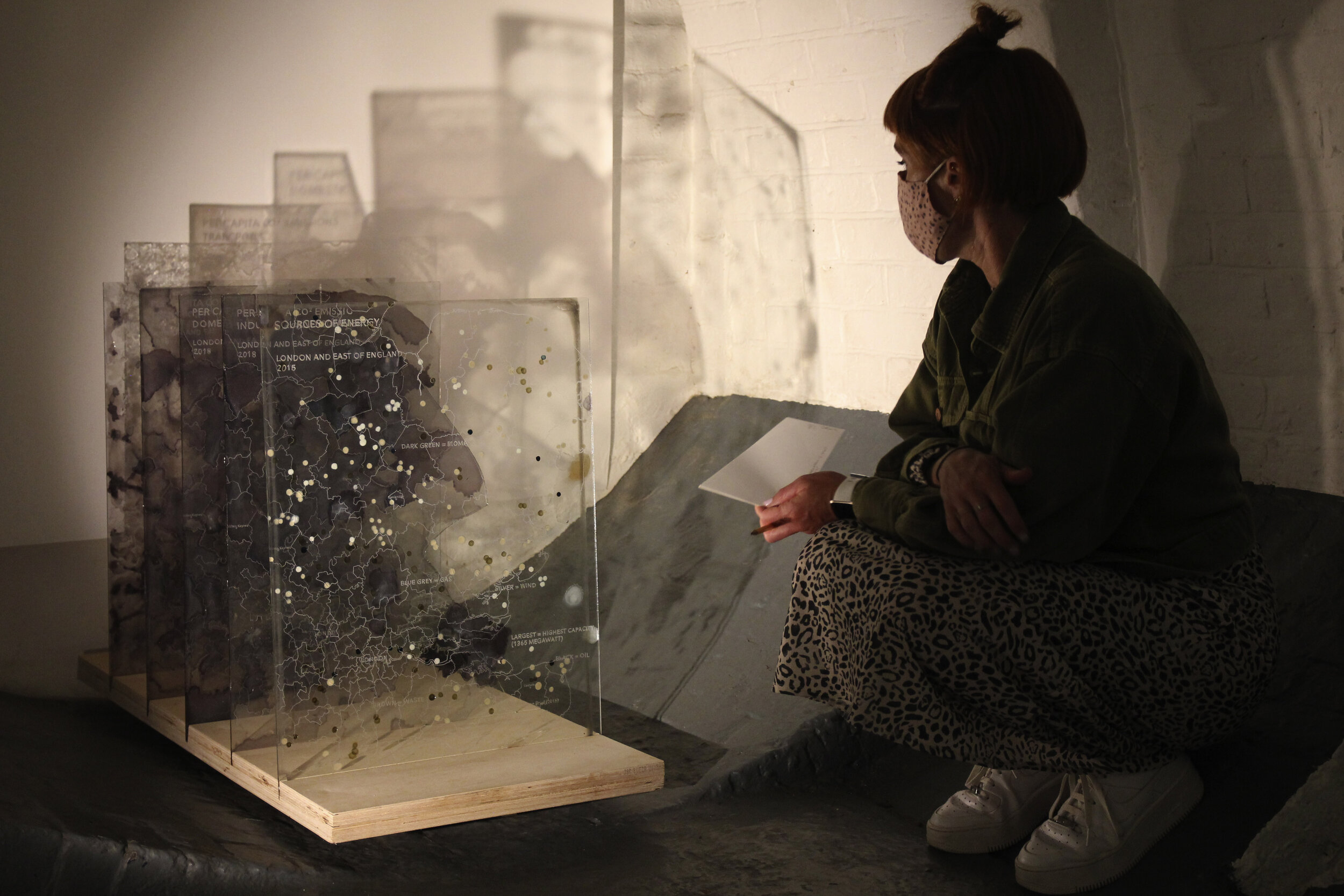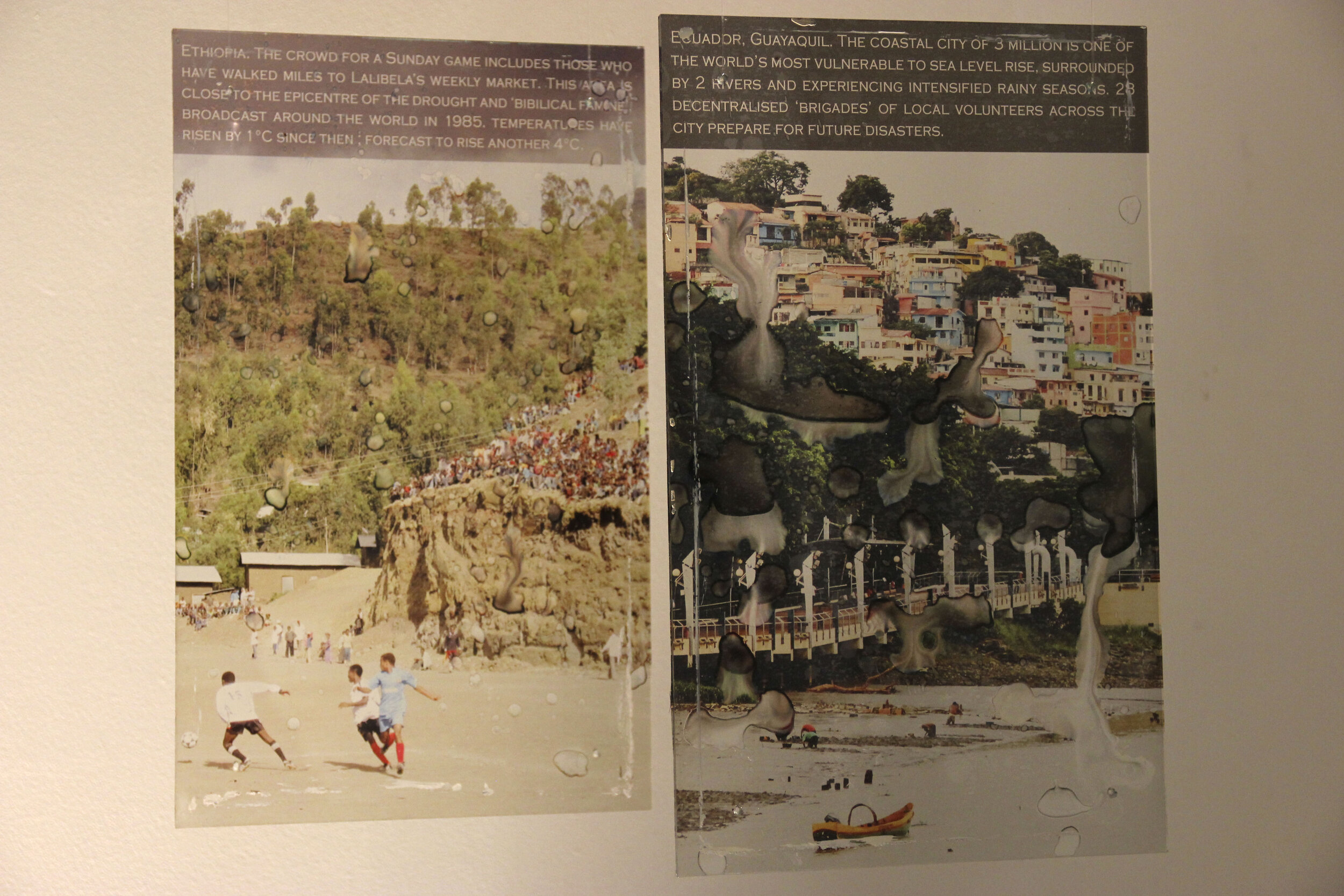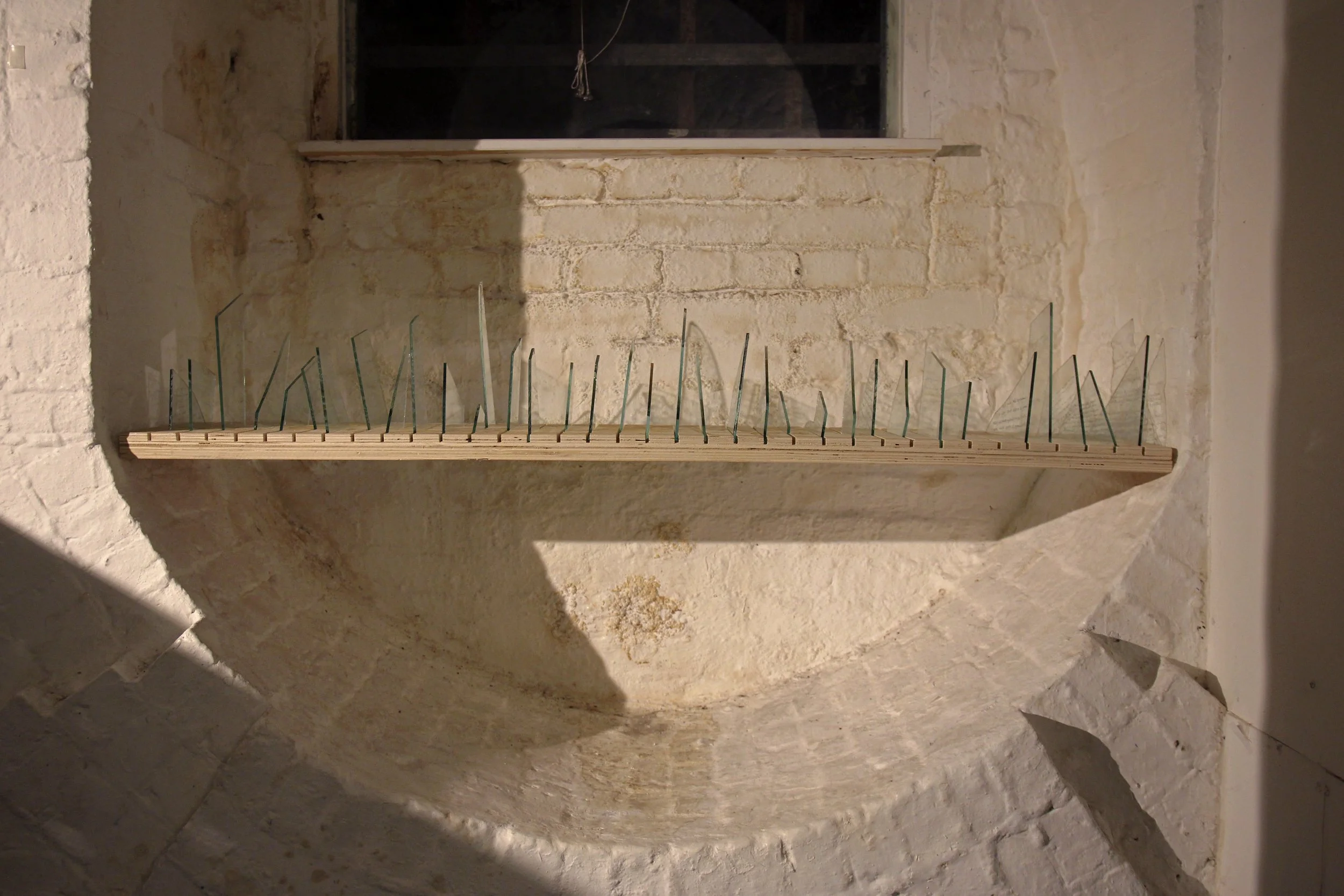the glass house
Enter the Glass House, where participants consider climate policy, together, in a space where we are immersed in layers of climate science and art…
In the shadow of national and international discussions on climate change, Glass House explores the role that art can play in policymaking. It takes a practice-based approach to considering issues from ongoing research I am leading on the role of art in policy supported by Arts and Humanities Research Council, Clore Leadership and UAL’s Social Design Institute. Glass House focuses in particular into the effects that art can play in different stages of the policymaking process.
Layers of Bangladesh presented five glass slides showing different types of information relating to the impacts of climate change. Sea level data and rainfall is overlaid with economic and population data. The work takes as a reference point interactive data visualisations, where data overlays can be toggled on or off. It aims to playfully subvert this digital tool by rendering Bangladeshi data on recycled greenhouse panes donated to the artist by a Walthamstow allotment holder.
The artwork intends to gently prompt the viewer to consider the relationship between climate factors and more socio-economic drivers of climate vulnerability. In doing so it explored one of the effects of art I identified in my research that was relevant for policy: the cognitive impact of art, its ability to raise awareness of issues and provide information which otherwise people may not have found or be aware of.
Layers of South East Asia represented a human-sized counterpoint to this, and aimed to examine another effect of art: the multisensory - visual, physical, kinaesthetic, aural, haptic and so on - interpretation of a policy idea or issue. The three panels showed changes in rainfall, flooding and population in the region. Attendees own height, their physicality and how they moved in relation to the three panels changed their very perception of how the evidence relating to climate change mapped onto parts of South East Asia.
Layers of East of England looked at the energy systems which are intrinsically linked with the environment, including data relating to sources of energy in the region, and the carbon emissions associated with transportation, domestic and commercial energy use. As with Layers of Bangladesh, and indeed all of the artworks, the data is depicted on recycled greenhouse glass. Whereas previously I worked hard to polish and grind the panes back into a pristine state, for this artwork the glass is as originally found, including a patina of grime and broken edges. Here the materiality of the piece speaks to another effect of art that is relevant for policymaking: its emotional impact.
This theme continues with Greenhouse Panes, where images of the effects of climate change are rendered onto old window panels. The images are distorted, washed out and blistered by a watery, in some cases completely obliterating the evidence described on them.
In a similar vein, Broken Arctic Map shows the reduction in the Arctic ice sheet between 1979 and 2020, engraved on scratched and broken 10mm glass.
The final piece in the show explored whether art can play a role in the relationship between science and policy via the creation of dialogical space. Rather than expecting individuals to read lengthy reports or sit through long presentations of evidence, Climate Data Discovery instead arranges 40 pieces of climate evidence around a space.
Participants looked at the information in their own time, focusing on what they found interesting. They were asked to answer on a card “What policy needs to happen, and why?” - but only after sitting and talking about the issues in a group with random strangers. The fact that the group engaged with the same collection of artefacts provided a common starting point for their discussion. The fact that they all brought their own perspectives, values and biases made it richer. The participants, talking, was the ultimate work of art in this show.
The participant’s cards were collected at the end. As a final twist, the handwritten information was engraved on shards of broken glass before being displayed in a growing, iterative, participatory artwork at the end of the space.
The next stage of the art and policy research is to analyse the ideas suggested on the cards and shards, along with further interview data collected from participants. If Glass House has sparked your imagination, here are some possible next steps for you:
If you are interested in supporting an innovative project exploring the deployment of new techniques in policymaking please get in touch with Policy Lab.
If you are specifically interested in displaying or incorporating Glass House please contact me.
You can read more about the underlying research on the role of art and policy here.
Layers, Bangladesh was on view at the Terre Verte gallery in North Cornwall through Autumn 2021.
















